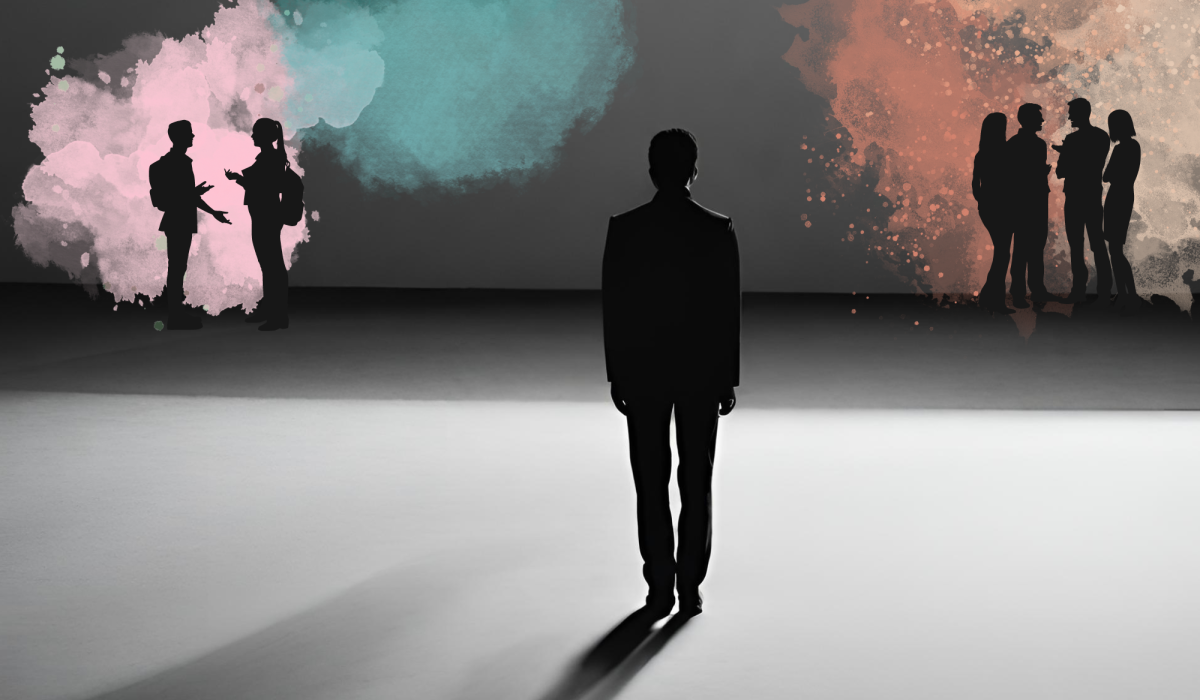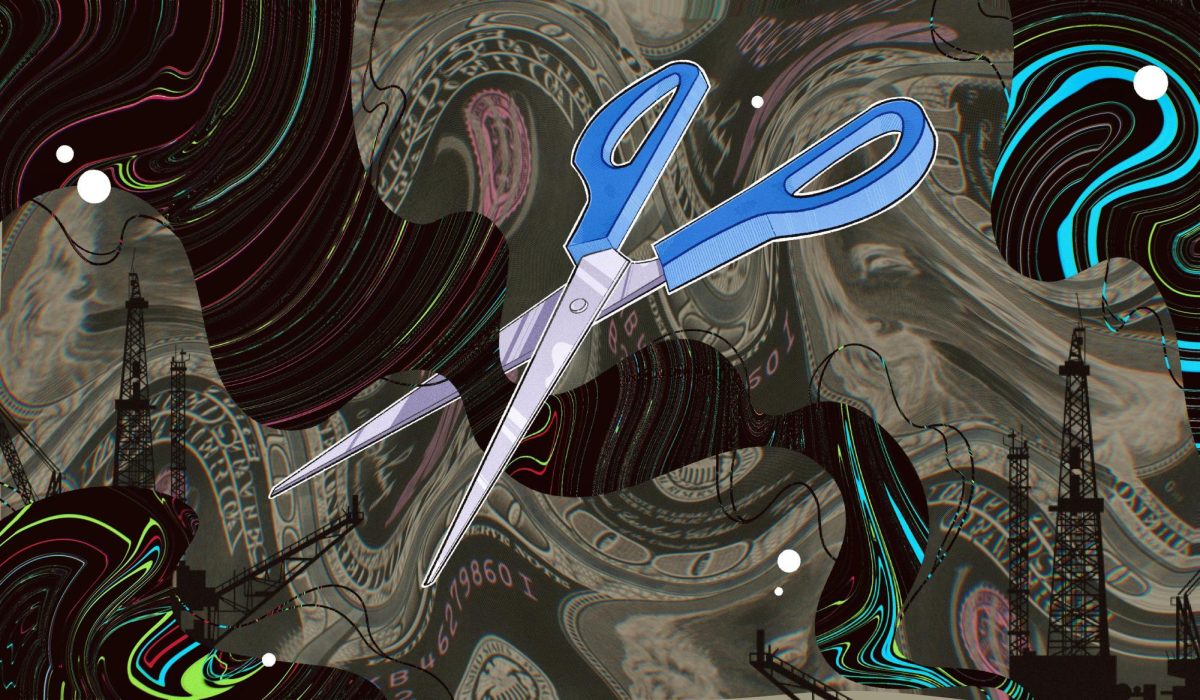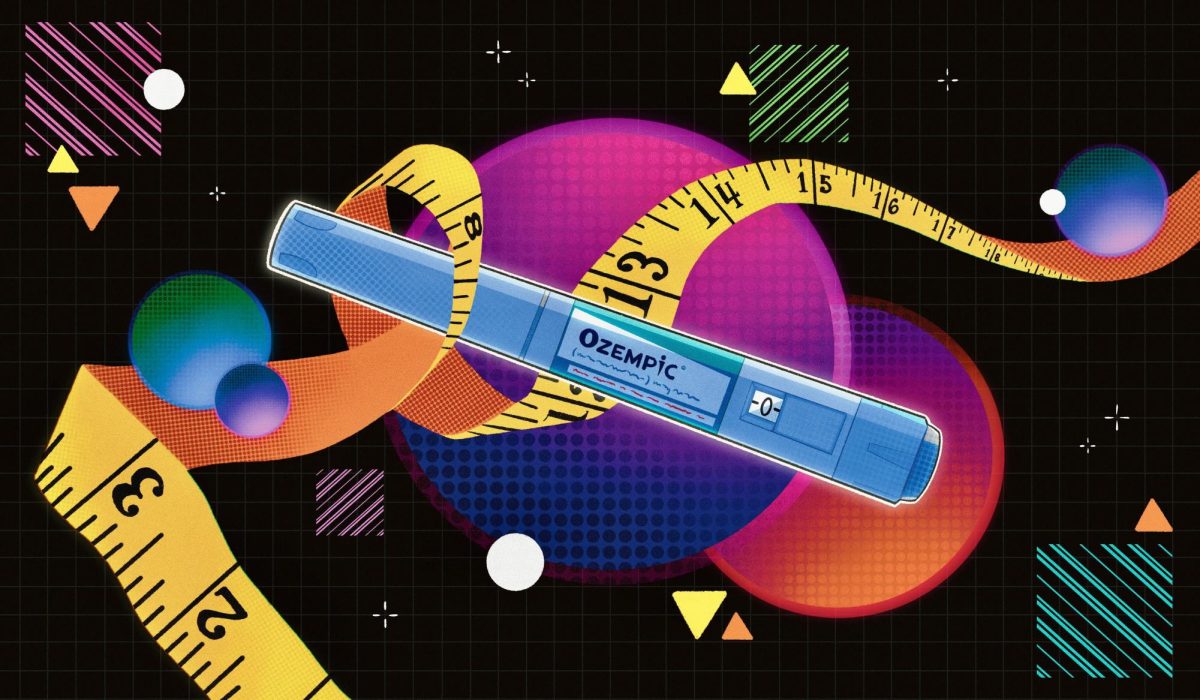BEST SOCIAL SCIENCES PROFESSOR – John Skrentney

One of the worst thing ever invented — clocking in just after Furbies, but before fist-pumping bros — are three-hour classes. After sitting through five grueling courses, I know firsthand how tedious they can be. It takes a special kind of charm to make these gabfests into something students bother attending, but for sociology professor John Skrentny, it’s just another day at the office.
The cards seem to be stacked against him: a three-hour class that runs into the evening, lectures on the sociological nuances of law and a massive room that makes sleeping both inconspicuous and ideal. Instead, the man turned water into wine — he gestured, he chuckled, he paced, he joked. Skrentny’s teaching style is based on the Pied Piper, leading his students to their ideological destination before they even realize they’re following. Skrentny spends class time telling funny stories about his childhood, asking for students’ opinions on current sociological matters and discussing the facets of law. The man has turned teaching into a performance art.
Plenty of people will tell you his classes are easy and — true enough — it is possible to scrape by with minimal studying, which is a testament to his ability to make a complex concept seem simple. Soon, you’ll forget you’ve been watching the Piper play for the past few hours, paralyzed by his teaching finesse and ready to follow his analysis.
—NEDA SALAMAT *
FOCUS EDITOR
BEST FINE ARTS PROFESSOR – Ricardo Dominguez
Fine arts professors are the bad-asses of UCSD’s faculty. They never plan their lectures, and they refuse to let you know where to find the syllabus. After a year’s worth of classes, it’s clear to me that Ricardo Dominguez is the most impressive professor ever to put symbolic brush to metaphorical canvas.
Already infamous on campus for his controversial projects that have everyone riled up, Dominguez’s classes are nothing short of outrageous. His lectures are more like performances, where he dazzles the artistically inclined and frustrates math majors with what seem like nonsensical tirades. He’s not teaching to impart knowledge, but to inspire thought. He has a flair for the dramatic — emphasizing each word, gesturing wildly. The content is so shockingly pornographic, students walk out and drop the class. If you’re like us, you’ll be paralyzed, terrified by his brilliant psychosis.
It’s not for everyone, as those who evacuate the room early on can tell you. But, as the class hits its groove, survivors are loaded up with challenging projects that inspire artistic growth. Dominguez emphasizes that art is not contained in the world of the concrete, like in paintings and statues, but exists mostly in the ephemeral, which he defines as the actions that cease to exist after the moment has passed. Life itself becomes your art.
As he talks, you can tell that Dominguez infuses art into his everyday tasks — it’s everything to him. It’s hard not to be inspired.
—REBEKAH HWANG *
ASSOCIATE ART EDITOR
BEST MATHEMATICS PROFESSOR – Laura Stevens
Mathematics is simultaneously many students’ least favorite subject, and a general education requirement for five of the six colleges. While math is the same in every language, it can be confusing regardless where you’re from. Unless you’re a genius that learned calculus in fifth grade, learning math requires a patient teacher who can help make sense out of the numbers, variables and the df/dx statements.
At UCSD, Laura Stevens is probably the best there is. Some professors forget that many students struggle with the material and fathom how anyone in the class would be confused. Not so with Stevens, who knows exactly how to put the material — even the difficult concepts — in a way that is easy to understand. Unlike the research-before-students phenomena that plagues many UC professors, Stevens’ lectures are animated and engaging. She writes the important points on the board to facilitate note taking and uses a good mix of theory and examples. Questions are always welcome, both inside and outside of class.
And in case anyone doubts her passion for her job, you can just look down: A tattoo with the symbol of pi adorns the top of her foot.
—LIAM ROSE *
SPORTS EDITOR
BEST TIME TO HAVE CLASS – Morning
When it comes to signing up for classes, hours of WebReg deliberation and fiddling with Class Planner go into carefully crafting the perfect schedule. There’s the early morning camp, who fortify their position with the tempting argument of getting the whole painful process over with. But the prospect of waking up after a solid Thursday night — Four Loko hangover and all — to drag yourself to an 8 a.m. calculus lecture is enough to put most people off.
Then there are the night owls who value their precious sleep. While lazing out of bed at 1 p.m. is a beautiful thought, this plan is not without flaw. Not only are these people nocturnal creatures that greet lunchtime with the dismay usually reserved for breakfast, they miss out on any number of evening shenanigans.
Starting late in the morning and getting the whole thing done with before (late) lunch, then, is the way to go. Your brain is more alert earlier in the day, so these mid-morning classes avoid the pitfall of dozing off in afternoon classes that fall right after a sleep-inducing lunch. Also, with classes that finish early, there’s no race to jam a Zanzibar sandwich down your throat just to keep going.
Finishing class before lunch also leaves the rest of the day to enjoy. For those who work, it allows the flexibility to incorporate your work hours into the week. Plus, with free afternoons, there’s plenty of opportunity to take full advantage of the college dream and laze around at the beach, or take part in some afternoon debauchery — isn’t that what college is all about?
—AYELET BITTON *
ASSOCIATE NEWS EDITOR
BEST MUSIC TO STUDY TO – Ratatat
To the head-bobbing hopefuls who keep a 24/7 plug in their iPods during finals week, there’s bad news: When it comes to studying, there is no magical song that will instantly make you more intelligent. Listening to Baby Mozart on a loop while cramming for that ethnic studies test probably won’t do anything except give you a few pretentious conversation starters. (Have you ever noticed how dissonant the final chord in Mozart’s Concerto in D Minor is? Wow, me too!)
When you’re struggling to stay awake at 3 a.m. the night before that dreaded chemistry midterm, you don’t need complex 18th-century opera. All you really need is to stay awake without getting too distracted.
Finding that perfect balance is mostly a matter of personal opinion, but hours of trial and error have clearly shown me what isn’t a successful soundtrack to long hours of quality time with a bio book.
Jazz is not the answer. One finals week I went on a jazz and blues binge, spending hours testing Miles Davis’ ability to improve upon my understanding of statistics. But I didn’t want to study, I just wanted to chill out.
Then, as per a friend’s offhand suggestion, I created an S Club 7 Pandora station, thinking that childhood nostalgia might bring me back to happier times and make my essay on existentialism less painful to write. It didn’t — I just laughed my ass off with every new *NSync and A-Teens song that appeared.
After a few more unfortunate experiments (Top 40 hip-hop and bossa nova among the genres tested and found wanting), I landed upon my ideal study band: Ratatat. There are no lyrics to distract, and the rhythmic electronica is just varied enough to keeps one’s eyes open. So give it a whirl: Turn on “Wild Cat” and let the genius flow.
—ARIELLE SALLAI *
HIATUS EDITOR
BEST (LEGAL) STUDY AID – Coffee
It’s only first week, so most of us haven’t been burned out by the gauntlet of academics just yet (though we’re counting the days until the mid-quarter mental breakdown) and have yet to resort to a handful of coke and Adderall to get ’er done. But for those venturing early into legal study aids, there’s a deluge of FDA-approved shit to get into. Caffeine pills, energy drinks, five-hour energy, coffee, soda — there’s entire industries devoted to helping cram the basics of marine bio, but process of elimination reveals the clear winner: coffee.
For starters, you can check home remedies and homeopathic gimmicks at the library doors. Sure, you should theoretically choose the “healthy,” “all-natural” choice that won’t leave you shaking for hours, but you also should have read the first 10 chapters of that poli-sci reader before midterm’s eve. We’re a little past that point and a stick of gum won’t pull you through the night. The “no crash” 5 hour energy option tends to be unpredictable at best and ineffective at worst; stick with the tried and true.
That leaves us with the popular alternative: caffeine. Yeah, you can try to shovel cartloads of chocolate into your craw in hopes of achieving some similar sugar-induced hyper-high, but you’ll hit rock bottom faster than Evel Knieval. Save your money.
On the surface, energy drinks seem the most effective — even if they taste like a mixture of cough syrup and morning-after vomit. But when you look at the ingredients, it turns out they have fewer milligrams of caffeine per ounce than an espresso shot. While a two-ounce espresso shot contains 70 to 150 mg of caffeine, a 16-ounce Monster only holds 160 mg of caffeine. Energy drinks top out at around 300 mg of caffeine, so even with latte prices climbing through the roof, coffee still provides you the most for your dollar.
Bonus points go to anyone who tries to study off Four Loko — a toxic mixture of caffeine, alcohol, and ingredients like taurine guarana. Timed correctly, you can end up spectacularly drunk just as the ink is drying off your MMW paper.
It’ll make the morning after almost worth it.
—NEDA SALAMAT *
FOCUS EDITOR
BEST INTERDISCIPLINARY/HUMANITIES PROFESSOR – Wayne Yang
There’s a few types of professors you don’t want to have. One of them is the guy who — despite his mane of graying hair and the fact that he uses the word “groovy” on a daily basis — is convinced he’s cool enough to relate to our hip new generation. Ethnic studies professor Wayne Yang is not that guy, but not because he doesn’t have any hair. Unlike the outdated professor trying to live vicariously through his students, Yang has had his own array of life experiences, which he uses to turn the classroom into a multifaceted look at various cultural perspectives.
From the very beginning of class, he plays songs like “Wake Up” by Arcade Fire and “Going On” by Gnarls Barkley as students filter in, to make lecture seem less like an obligation and more like a privilege.
As someone who doesn’t go to class if I don’t want to, it’s a testament to Yang’s teaching prowess that last quarter I refused to miss a single lecture. Aside from delighting the hipsters with his elite taste in indie music, Yang has an uncanny knack for lifting students’ spirits. One lecture, sensing the Monday-triggered haze of despair that usually falls over the room, Yang reminded the class of Harriet Tubman and how, compared to her, we didn’t even know what tired meant.
By incorporating his life experiences — teaching in Oakland, working against the elimination of ethnic studies classes in Arizona and founding his own high school for low-income students, among other things — into his lectures, Yang keeps his students sitting on the edge of their seats, scribbling furiously in an attempt to transcribe every word he says.
(Plus, it didn’t hurt that he offered extra credit for going to a Nas concert.)
— BY CHERYL HORI *
OPINION EDITOR
BEST COMPUTER SCIENCE/SCIENCE PROFESSOR – Rick Ord
Regardless of the gossip surrounding his educational upbringing, Ord and his legendary compilers class remain one of the staples of the comp sci department and an invaluable resource for anyone looking to go into the field.
Ord’s greatest contribution — as far as students are concerned — is his compilers class. Potential employers flock to it, aware of how invaluable it is to their company’s success and how thorough Ord’s teaching style is. Ord’s class is like a golden ticket — a student who has passed those 10 weeks of hell is immediately more likely to be hired, regardless of his or her grade in the course.
Though the class is almost unnecessarily tedious due to its difficult content, Ord is more laid-back than your typical professor, and more than willing to help anyone who may be struggling with the in’s and out’s of binary and coding. Though the content may be exhaustive, there are some study benefits to Ord’s course. The tests are almost always reflective of previous exams, so the format and questions are fairly easy to deduce. Though he refuses to hand out past answer keys, Ord will give out old tests as per his policy: Ask, and thou shalt receive.
— BY REGINA IP *
NEWS EDITOR
BEST STUDY TIME – 3-4 PM
The best time to knuckle down at Geisel Library is that ethereal time of night when the last shots have been drained, the stereo is busted and a friend is drawing penises on your face — sometime after you finish puking, but before you pass out. Let’s face it. There’s really no good time to study.
College only lasts so long, but organic chemistry will always be confusing. Get high, get low, get down, get some food and then hit the books. If you must, skim the chapter as you skateboard to class on the day of the test, or maybe read it afterwards to figure out what you missed. But better yet, just don’t study at all.
Really, studying should be approached as a measure of last resort — something to turn to only in moments of desperate boredom or inebriated confusion, like when you get lost en route to Round Table and end up in the library instead. Or when you mistake your lecture notes for directions to the kegger.
That said, if you’ve exhausted all possible methods of procrastination and have managed a successful puke and rally, visit the library around 3 or 4 p.m. for maximum productivity and minimal distraction. Early mornings in the library are hectic with students printing off last-minute essays and frantic cramming. Lunchtime is rife with the odors of Panda Express and Rubio’s and anytime after dark means dealing with a daunting walk home through a deserted campus, as the singing tree blasts death metal.
—ZOE SOPHOS *
ASSOCIATE FOCUS EDITOR
BEST PLACE TO HAVE CLASS – Center Hall
There’s always the general tips to keep in mind when mapping out the most efficient schedule. For starters, don’t sign yourself up for back-to-back classes in Warren Lecture Hall and Galbraith, unless you plan for sprinting uphill with a backpack full of textbooks to take the place of a daily workout. All lefties should steer clear of Solis for its lack of left-handed desks (apparently there’s a classroom designer somewhere with a sense of humor), and above all, beware the dreaded 8 a.m. lectures in Price Center Theater’s plush seating and dim lighting. Napping is inevitable.
For those looking to cut down on the commute, with the added bonus of somewhere convenient to stuff your face in between discussions, Center Hall is a wise choice.
The trek to and from Center Hall is only 20 minutes tops from anywhere on campus (by foot) and, for the lazy man, the shuttle stop is fewer than a hundred yards away. The building is relatively near Gilman Parking Structure and ridiculously close to the stops for any bus (city, shuttle or otherwise) that comes by campus.
On top of that, the wide spectrum of classroom sizes fit every discussion-lecture need. Most classrooms have well spaced, built-in seating to avoid awkward, elbow-bumping encounters with your classmates. Room sizes — the second floor especially —are comfortable enough to allow for leg room, without feeling like you’re sitting in the nosebleed seats at a Lady Gaga concert.
Situated next to Price Center for easy access lunch, caffeine and extra school supplies, Center Hall also boasts a coffee cart conveniently parked under the front staircase for those emergency pre-exam caffeine fixes.
Center Hall’s other perks include moderately-sized bathrooms (slightly bigger than Geisel’s) on every floor that are usually clean and without a line, as well as the opportunities to people watch and schmooze your TA as you stroll down Library Walk before and after class.
—ZOE SOPHOS *
ASSOCIATE FOCUS EDITOR







